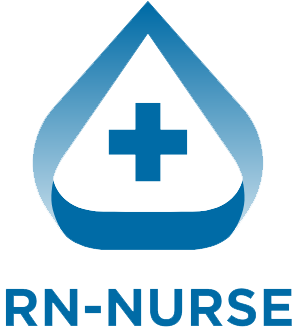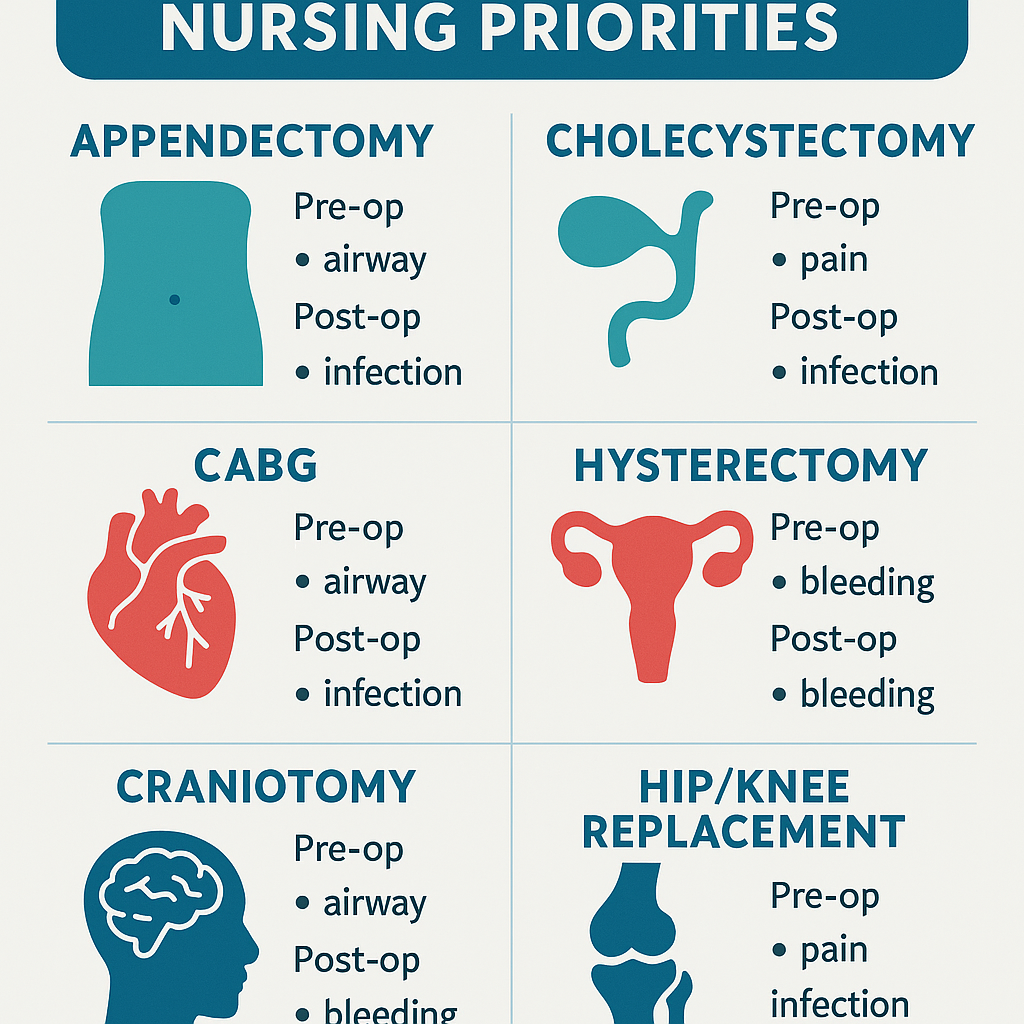Surgeries are common in hospitals, and nurses play a vital role in preparing, monitoring, and supporting patients before, during, and after procedures. Whether you’re a nursing student preparing for the NCLEX, a registered nurse (RN nurse) on the floor, or studying through a nursing bundle, understanding the top surgeries and their nursing priorities is essential.
This guide breaks down the most frequent surgeries and highlights what every nurse should focus on to promote safety and ensure a smooth recovery.
🩺 Preoperative Nursing Priorities
Before surgery, the RN nurse holds several key responsibilities. First, patient education is crucial—explain the procedure in clear, simple terms. Next, verify that informed consent has been signed correctly. Then, confirm the patient’s NPO (nothing by mouth) status to prevent aspiration during anesthesia. Additionally, obtain baseline data such as vital signs, laboratory results, and allergies. Finally, prepare the skin and establish IV access for fluids and medications.
👉 On the NCLEX, questions often emphasize pre-op teaching, consent verification, and safety measures.
🫀 1. Appendectomy (Removal of Appendix)
Reason: Performed for appendicitis, which involves infection or inflammation of the appendix.
Nursing priorities include: assessing for pain in the right lower quadrant (McBurney’s point) and monitoring for fever or peritonitis, indicated by a rigid abdomen or guarding. After surgery, monitor bowel sounds, encourage ambulation, and gradually advance the diet as tolerated.
❤️ 2. Cholecystectomy (Gallbladder Removal)
Reason: Typically done due to gallstones or gallbladder infection.
In this case, monitor for right upper quadrant pain and jaundice. Following surgery, observe for signs of bile duct injury such as abdominal pain, fever, or persistent jaundice. To prevent complications, encourage deep breathing exercises and early ambulation to reduce the risk of pneumonia.
🫁 3. CABG (Coronary Artery Bypass Graft)
Reason: Performed for severe coronary artery disease to restore blood flow to the heart.
Preoperatively, teach patients about sternal precautions and pain control. Postoperatively, monitor for cardiac rhythm changes, bleeding, and infection. In addition, assess chest tubes, oxygenation, and pain levels regularly.
👉 On the NCLEX, CABG questions often test knowledge of cardiac monitoring and wound care.
🩸 4. Hysterectomy (Uterus Removal)
Reason: Conducted for conditions such as cancer, fibroids, heavy bleeding, or endometriosis.
Nursing care focuses on assessing for hemorrhage by checking perineal pads, monitoring urinary output, and providing emotional support for possible body image concerns. Encouraging open communication can also help patients cope postoperatively.
🧠 5. Craniotomy (Brain Surgery)
Reason: Performed to remove a tumor, relieve bleeding, or decrease swelling.
Priority nursing actions include conducting frequent neurological checks (pupil size, level of consciousness, and motor strength), keeping the head of bed elevated 30° to reduce intracranial pressure, and monitoring for CSF leaks, seizures, or bleeding. Always report any sudden neurological change immediately.
🦴 6. Hip or Knee Replacement
Reason: Commonly done for osteoarthritis or fractures.
To promote recovery, prevent DVT using compression devices and anticoagulants. Encourage early ambulation and physical therapy participation. Furthermore, monitor for signs of infection or dislocation, especially after hip replacement.
🩺 Postoperative Nursing Priorities
Across all surgical types, the RN nurse must closely monitor:
- Airway and breathing – oxygen levels and respiratory effort
- Circulation – blood pressure, heart rate, and signs of bleeding
- Pain management – using validated pain scales
- Infection prevention – aseptic technique and temperature monitoring
- Mobility and safety – early ambulation and fall prevention
👉 These areas are heavily tested on the NCLEX and are a vital part of every med-surg nursing bundle.
✅ NCLEX Tip
When answering NCLEX questions related to surgical care, always:
- Prioritize airway (ABC principle).
- Assess before intervening to gather adequate data.
- Recognize red flags: fever, bleeding, respiratory distress, or sudden pain.
📌 Final Thoughts
Common surgeries such as appendectomy, cholecystectomy, CABG, hysterectomy, craniotomy, and joint replacement each require specific nursing priorities. As a registered nurse or nursing student, you must focus on airway, circulation, pain management, infection prevention, and mobility.
For NCLEX preparation, reviewing these key points within a nursing bundle enhances retention and confidence. Ultimately, mastering surgical care ensures that every RN nurse delivers safe, efficient, and compassionate patient care.

